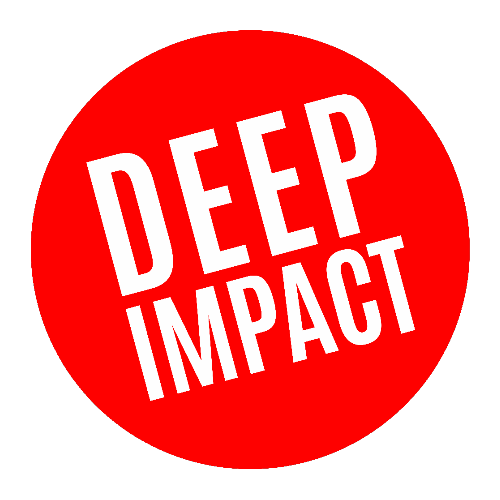In my work across various sectors—from corporate boardrooms and healthcare systems to government agencies and educational institutions—I often see a pattern.
Leaders, managers and decision-makers assume they have the best solutions for their teams, customers or communities. They design strategies, roll out initiatives and prescribe actions, sometimes without meaningful input from the very people they are trying to serve or lead.
But what happens when we challenge this top-down approach? What if instead of imposing solutions we started by asking and listening?
What could we achieve if we shifted from guessing what people need to uncovering what already works for them and building from there?
This shift towards collaborative problem-solving or co-creation is more than just a trend; it’s a fundamental change in how effective leaders drive sustainable results.
It’s about moving from a mindset of directing to one of partnering.
Here are the benefits of this approach:
- More Buy-in: Solutions developed collaboratively get more acceptance and support.
- More Engagement: People feel valued and invested when their input shapes the outcome.
- More Sustainable: Outcomes built on existing strengths and user realities are more likely to stick.
- Faster Innovation: Tapping into collective wisdom often surfaces better ideas more quickly.
- Stronger Relationships: Co-creation builds trust and respect among stakeholders.
Stakeholder Management

Stakeholder management is a key part of project management or change management that involves identifying, analyzing and engaging with stakeholders to ensure their needs and expectations are met.
Effective stakeholder management is critical for project success and change management as it builds trust, credibility and buy-in from key stakeholders. When companies engage stakeholders effectively they create a foundation for successful project outcomes and long-term relationships.
Stakeholders can include anyone who has an interest in the project or changes in organisations, from team members and customers to board members and external partners.
By understanding and addressing the concerns and expectations of these diverse groups organisations can navigate their thoughts and feelings more effectively.
This proactive approach not only mitigates risk but also creates a collaborative environment where stakeholders feel involved.
The principles of stakeholder engagement
Stakeholder engagement is built on several principles that guide how organisations interact with their stakeholders throughout the project lifecycle:
- Stakeholder Identification: The first step is to identify all stakeholders who have an interest in the project and have a certain level of influence at work. Having a comprehensive stakeholder list ensures no key stakeholders are missed.
- Stakeholder Analysis: Once stakeholders are identified it’s important to analyse their needs and expectations. This involves understanding what each stakeholder group values and how they can impact the project. By understanding these factors organisations can tailor their engagement approach.
- Communication Plan: A well-designed communication plan outlines how stakeholders will be engaged and informed throughout the project lifecycle. This plan should detail the methods and frequency of communication so stakeholders are kept in the loop and their input is actively sought. From experience, good communication is about communicating over and over again, across all levels, from senior leaders to middle managers. You cannot just depend on the senior leaders to hold change conversations.
- Stakeholder Engagement: Effective engagement goes beyond communication. It involves actively involving stakeholders in the decision making process, seeking their input and incorporating their feedback into project plans. Regular stakeholder communication and involvement is key to keeping them interested and supportive.
- Monitoring and Evaluation: Continuous monitoring and evaluation of stakeholder engagement is essential. This involves assessing the effectiveness of the engagement approach and making adjustments as needed. Feedback loops help refine the approach and ensure stakeholder needs are met consistently.
Why understanding stakeholders matters
Understanding stakeholders matters for project success because:
- Trust and Credibility: Showing a clear understanding of stakeholder needs and expectations builds trust and credibility. When stakeholders see their concerns are being taken seriously they are more likely to support the project.
- Managing Expectations: Regular updates and feedback helps manage stakeholder expectations. By keeping stakeholders informed and involved organisations can prevent misunderstandings and align project goals with stakeholder interests.
- Risk Identification and Mitigation: Engaging with stakeholders allows organisations to identify risks early on. Understanding stakeholder concerns helps develop strategies to mitigate those risks and ensure smoother project execution.
- Better Decision Making: Involving stakeholders in the decision making process leads to better outcomes. Stakeholders bring diverse perspectives and insights that can improve decisions and drive innovation.
- Project Success: Meeting the needs and expectations of key stakeholders is critical for project success. When stakeholders are happy they are more likely to support the project and therefore successful implementation and long term benefits. By understanding stakeholder management and the foundation of stakeholder engagement organisations can develop strategies that drive project success. This approach not only delivers project outcomes but also a culture of collaboration and trust which is key to long term success.
Why Traditional Stakeholder Engagement Fails
Many well-intentioned engagement efforts don’t deliver the desired impact.
Why?
Often it comes down to a few common pitfalls. Recognising ‘low interest’ stakeholders and communicating with them appropriately is key to ensure essential information is shared without overwhelming them.
These pitfalls include not building trust and confidence with stakeholders which is critical for successful collaboration and positive outcomes.
For corporate leaders—The assumption trap
Leaders under pressure to deliver quick results can fall into the trap of relying on their authority rather than seeking diverse perspectives.
They may assume they know what their employees or customers need based on past experience or limited data.
This “we know best” culture can lead to decision-making bottlenecks as feedback loops are ignored or undervalued.
The hidden cost is significant: disengagement, wasted resources on ineffective initiatives and missed opportunities for real innovation. I have seen cases where abortive work was done and promises were broken because leaders assumed that everyone was on board with the new changes.
As a Forbes article (2023) on mastering stakeholder engagement says truly driving business success requires moving beyond assumptions and actively involving those impacted by decisions through influencing which involves building relationships and guiding outcomes through consultation and negotiation (Forbes, 2023).
The illusion of process over people
Sometimes organisations rely heavily on frameworks, surveys and processes for stakeholder engagement.
While tools can be helpful supports, they are not substitutes for genuine human interaction and participation. Filling out a form is fundamentally different from being part of a collaborative design process.
Real stakeholder buy-in requires more than just information gathering; it demands active involvement where individuals feel heard and see their input influence the final outcome.
Engaging stakeholders with high influence through regular communication and strategic involvement is key to ensuring their support and driving project success.
Beyond theory: the human element
Standard definitions of stakeholder engagement focus on identifying and managing stakeholder interests. While true, these definitions can be too abstract for leaders on the ground.
Engagement isn’t just about informational outreach; it’s about emotional connection and building trust. It requires understanding the motivations, concerns and aspirations of stakeholders on a human level.
Effective communication and involvement of stakeholders can help mitigate risks associated with uncertainty by considering stakeholder needs and building trust thus reducing the potential for dissatisfaction and resistance to change.
Co-Creation in Stakeholder Engagement

Moving to a co-creative model changes the dynamic between leaders and stakeholders. A well-designed stakeholder engagement plan is key to project success.
Recognising different stakeholder groups and tailoring communication to engage with them effectively is critical.
This approach ensures different stakeholder groups with varying levels of interest and influence are engaged optimally leading to better relationships and decision making.
For leadership teams—What co-creation really means
Co-creation isn’t about abdicating leadership; it’s about enhancing it through collaboration. It means asking powerful open-ended questions to unlock the wisdom that already exists within the group.
Instead of providing ready-made answers leaders facilitate a process where stakeholders become architects of their own solutions.
This moves initiatives from being top-down mandates to team-led initiatives, fostering a sense of shared ownership by involving stakeholders in the decision-making process.
I have seen leaders who have consistently co-created new possibilities with their employees on designing ways to better engage their stakeholders and go to market with their ideas faster.
A French Applications Business that I worked with reported that they were able to increase their revenue by over 23% over 2-year period because leaders consistently co-created new solutions with their employees.
Transformative Insight—Why co-creation builds trust faster
There’s a reason collaboration feels good – it’s partly neurobiological. Working together towards a shared goal can build connection and trust.
When people feel their perspectives are heard and included trust is built faster and deeper than through persuasion or directive communication alone. A practical example can be seen in healthcare settings.
When the CEO of a large public hospital we worked with spoke about patient-centricity, the underlying principle was co-designing care pathways with patients, recognising their expertise in their own lives and conditions.
You may have expertise in your field of work, but getting buy-in from your colleagues or patients is a lot easier when you listen to them and seek their feedback.
Also categorising influence groups based on their interest and influence levels is key to effective communication and engagement.
This strategic approach ensures ‘high interest and high influence’ groups get the necessary resources while lower priority groups are managed with less intense engagement.
From talking to stakeholders to working with them
Communication skills are important certainly.
But co-creation goes beyond just clear communication. It’s about prioritising inquiry over instruction.
Techniques, like facilitated “listening labs” or structured stakeholder interviews, become tools not just for gathering data but for building relationships and co-developing solutions in real time. It’s about asking more questions than giving directives.
A well-designed stakeholder engagement plan is key to managing expectations and reducing project risk.
Embedding a Solution-Focused Approach in Leadership
This shift to co-creation is supported by a solution-focused mindset, a core principle in my coaching and consulting work.
This is where we invite stakeholders to design their preferred future, amplify useful changes that is already working and co-create steps forward. Everyone that we worked with liked how easy it is to hold conversations that will create optimism and momentum towards the change they desire.
Communicating with stakeholders regularly keeps them informed and included which is essential for effective engagement.
For HR and L&D—The leadership mindset shift
Instead of focusing solely on problems and deficits a solution-focused approach encourages leaders to become possibility explorers. This means actively looking for existing strengths, past successes and desired future states.
Asking questions that focus on past success leverages what’s already working within a team or organisation. Key Performance Indicators (KPIs) can then be reframed around these co-created outcomes, aligning performance management with this positive forward looking approach.
A recent article in the International Journal of Project Management (2025) says stakeholder engagement needs to be deeply integrated into strategic processes, implying without this human feedback loop even the best plans can fail (ScienceDirect, 2025).
Co-creation ensures this loop is active from the start. In most cases engaging stakeholders effectively, especially those with low interest and low influence requires a one-way communication approach to convey essential information without overwhelming them.
Transformative Insight—Small steps lead to big stakeholder shifts
Big change doesn’t always require massive, disruptive overhauls. Often sustainable transformation comes from consistent, small steps.
Applying behavioural insights through micro-engagements—like brief, regular feedback loops or small pilot projects co-designed with stakeholders—can create forward momentum without overwhelming the system.
Consider the global tech company example: instead of imposing generic perks they held focused discussions. Asking employees “What makes you feel valued?” and “When have you felt most engaged?” led to targeted, co-created solutions like mentorship programs resulting in improved engagement far more effectively than top down initiatives.
Sharing a communication plan with the project team helps keep everyone informed about the project’s status and updates throughout its lifecycle.
Industry Snapshot: Stakeholder Engagement in Action
Let’s look at an example where these principles were applied to deliver tangible results.
Case Study: Transforming Culture for Proactive Innovation
- Client: A large public integrated healthcare development in Singapore (4,000 staff across an acute and community hospital).
- Challenge: Needed to improve patient care by aligning culture with operational goals while ensuring safety and service quality during change.
- Our Approach: We used our “Small Steps To Big Changes®” framework alongside the 5Ds Framework. Middle managers and frontline staff were empowered to launch mini-projects tackling real departmental challenges, directly involving them in finding solutions. These initiatives had measurable targets and were presented to senior leadership, creating a feedback loop. Engaging high interest stakeholders in the planning process was key to ensure their active participation and support.
- Results & Impact:
- Process Simplification: Steps for routine tasks, like taking perishables for patients, were dramatically reduced (e.g., from 150 to 5).
- Enhanced Collaboration: Psychological safety improved, better cross-departmental teamwork. Staff engagement scores increased by up to 21%.
- Improved Patient Care: Redesigned processes led to fewer errors, better billing accuracy and more reliable procedures, directly improving the patient experience.
- Empowerment: Staff felt ownership over improvements, shifting the culture towards proactive problem-solving.
This example shows how involving stakeholders directly in identifying problems and co-creating solutions leads to practical, measurable improvements that resonate throughout the organisation.
Making It Real: Embedding Co-Creation in Your Organisation

Moving to a co-creative model requires conscious effort and commitment, especially from leadership.
It’s also important to address the specific issues stakeholders are most concerned about to ensure effective engagement and communication.
For executives—Practical starting points
- Audit Your Assumptions: Review a current strategy or initiative. Where are assumptions being made about stakeholder needs or preferences? How can these be tested through direct engagement?
- Design Your First Co-Creation Session: Identify a specific challenge or opportunity. Plan a structured session (even a short one) to genuinely solicit ideas and potential solutions from relevant stakeholders. Focus on asking, not telling.
- Pilot a Feedback-Based Initiative: Launch a small project where stakeholder feedback is actively sought and visibly used to shape the next steps within a short timeframe (e.g., 30 days).
Culture change—From control to collaboration
Long-term change requires embedding co-creation into the organisational culture. This means:
- Leader Modeling: Leaders must model an inquiry-first approach, asking questions and really listening.
- Psychological Safety: Create an environment where stakeholders feel safe to share their honest views, challenge assumptions and contribute ideas without fear of consequences.
- Shift Incentives: Recognise and reward collaborative behaviours and co-designed outcomes, not just top-down directives. Engaging with stakeholders who are influential and interested in the process is key to effective collaboration and resource allocation.
Start with one simple question
You don’t have to change everything overnight. Begin by incorporating simple, solution-focused questions into your daily conversations:
- “What’s working well here?”
- “How can we build on that?”
- “What’s the smallest step we can take together to move forward?”
Leadership Through Engagement
Ultimately the future of effective leadership is less about the quality of instructions given and more about the quality of questions asked and the willingness to listen deeply. The most impactful strategies, the most engaged teams and the most loyal customers are often the result of collaboration. Relationship building within stakeholder engagement is critical as it improves communication, negotiation and overall interaction to influence outcomes through collaborative and consultative processes.
So, I encourage you to make the shift: Ask, Don’t Guess. Co-Create, Don’t Dictate.
At Deep Impact Pte Ltd, our frameworks like Small Steps To Big Changes are designed for this – equipping leaders and teams to engage meaningfully, act collaboratively and achieve real, sustainable results, one small, co-created step at a time.
What are your thoughts on moving towards more co-creative approaches in your field? Where do you see the biggest impact?






